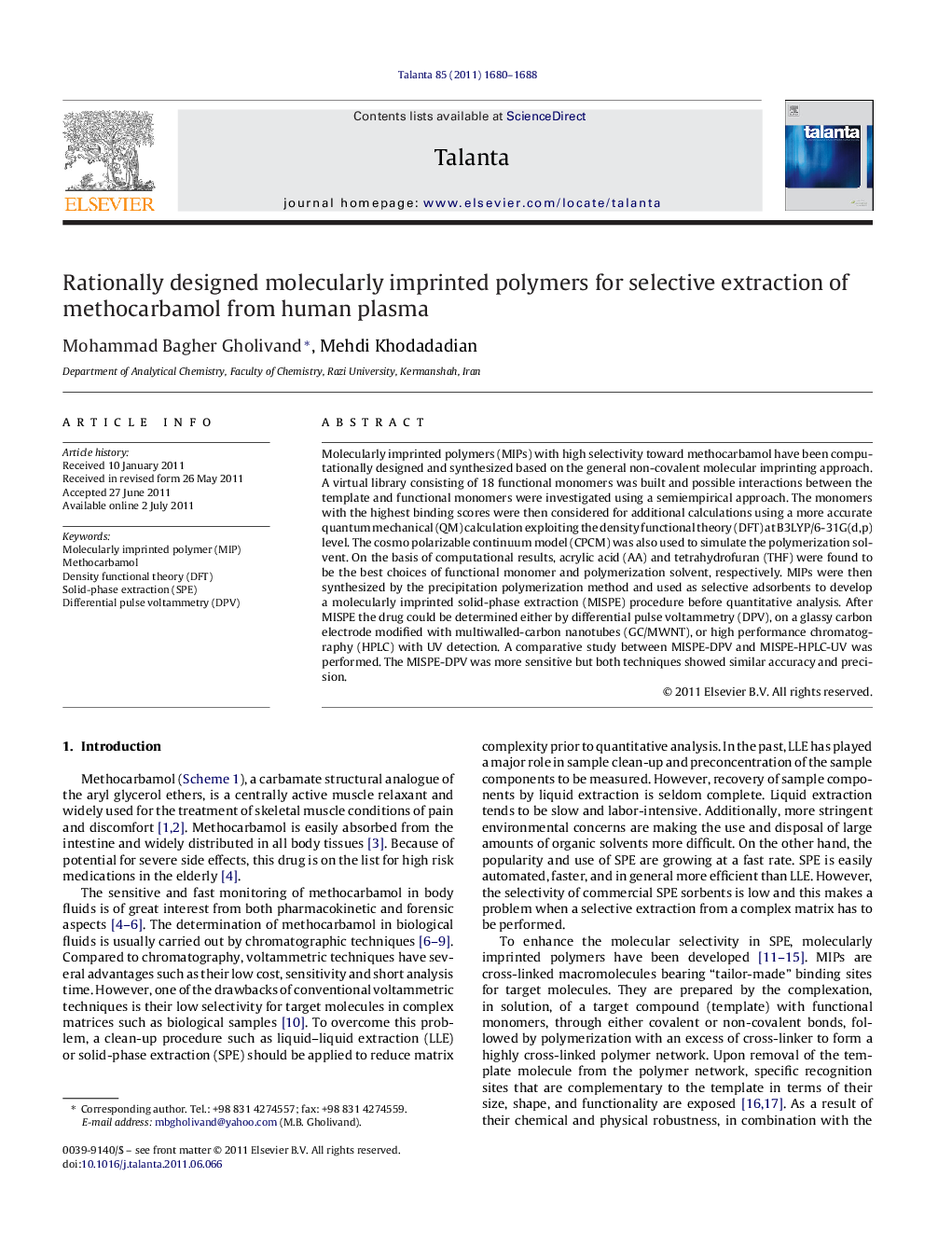| Article ID | Journal | Published Year | Pages | File Type |
|---|---|---|---|---|
| 10560557 | Talanta | 2011 | 9 Pages |
Abstract
Molecularly imprinted polymers (MIPs) with high selectivity toward methocarbamol have been computationally designed and synthesized based on the general non-covalent molecular imprinting approach. A virtual library consisting of 18 functional monomers was built and possible interactions between the template and functional monomers were investigated using a semiempirical approach. The monomers with the highest binding scores were then considered for additional calculations using a more accurate quantum mechanical (QM) calculation exploiting the density functional theory (DFT) at B3LYP/6-31G(d,p) level. The cosmo polarizable continuum model (CPCM) was also used to simulate the polymerization solvent. On the basis of computational results, acrylic acid (AA) and tetrahydrofuran (THF) were found to be the best choices of functional monomer and polymerization solvent, respectively. MIPs were then synthesized by the precipitation polymerization method and used as selective adsorbents to develop a molecularly imprinted solid-phase extraction (MISPE) procedure before quantitative analysis. After MISPE the drug could be determined either by differential pulse voltammetry (DPV), on a glassy carbon electrode modified with multiwalled-carbon nanotubes (GC/MWNT), or high performance chromatography (HPLC) with UV detection. A comparative study between MISPE-DPV and MISPE-HPLC-UV was performed. The MISPE-DPV was more sensitive but both techniques showed similar accuracy and precision.
Keywords
Related Topics
Physical Sciences and Engineering
Chemistry
Analytical Chemistry
Authors
Mohammad Bagher Gholivand, Mehdi Khodadadian,
